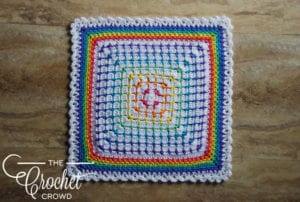The opposite of green on the color wheel is red. While red is green’s standard opposite color, this may vary depending on your color model. The RYB, CMYK, and RGB color models have different techniques for determining the opposite of green.
Green’s Position on the Color Wheel
Green sits in the middle of the color wheel, giving it an array of potential color combinations. The color is placed between yellow and blue. It pairs well with various cool and warm color tones.
In color symbolism, green is often associated with growth, renewal, and environmental consciousness. Mixing equal parts of yellow and blue creates green. Green’s position on the color wheel influences its complementary color, creating a visually striking effect.
Understanding green’s position on the color wheel gives insights into color harmonies and visual effects.
The Opposite of Green in Various Color Models
RGB Color Model and Its Opposite Color to Green
In the RGB color model, green is one of the primary colors alongside red and blue. Green’s opposite color in the RGB model is magenta.
The model is suitable for electronic displays, making it useful to graphic designers and cinematographers. It creates vibrant and vivid displays, achieves various color variations, and represents natural landscapes.
The RGB model uses additive color mixing techniques. It mixes red, green, and blue light wavelengths to create different colors. To find the complementary color of green in the RGB model, the specific shade of green is crucial.
In digital colors, precise hex values and codes are essential for identifying specific shades.
CMYK Color Model and Its Opposite Color to Green
The CMYK model achieves accurate colors, making it best for printing and physical color mixing. CMYK stands for Cyan, Magenta, Yellow, and Key (Black). Green is a secondary color in the CMYK model.
Mixing equal parts of cyan and yellow creates green. In the CMYK model, the opposite of green is magenta. Green plays a role in printing natural elements, environmental themes, and foliage.
Adjusting the levels of cyan and yellow creates green shades that match specific design requirements. The CMYK color model, unlike RGB, uses subtractive color mixing techniques.
It subtracts colors by absorbing light. Adding more ink color reflects less light, resulting in darker colors.
RYB Color Model and Its Opposite Color to Green
Like CMYK, green is a secondary color in the RYB color model. RYB stands for Red, Yellow, and Blue, the primary colors in the model.
Mixing equal parts of blue and yellow using the RYB color model creates green. Its complementary color is red in the model. Artists use the RYB color model to depict forests, foliage, meadows, and the vibrancy of the natural world.
Green’s Complementary Colors
The complementary colors to green create a striking contrast when paired together. Exploring green’s complementary colors offers insights into color harmonies. The table below illustrates the complementary colors to green for the main color models.
| Color Model | Primary Colors | Secondary Colors | Green’s Position | Green’s Complementary Color |
|---|---|---|---|---|
| RGB | Red, Green, Blue | Cyan, Magenta, Yellow | Primary | Magenta |
| CMYK | Cyan, Magenta, Yellow, Black (Key) | Red, Green, Blue | Secondary | Red |
| RYB | Red, Yellow, Blue | Orange, Green, Purple | Secondary | Red |
Opposites to Different Green Hues
Lime Green: Opposite of Magenta
This bright, vibrant shade of green resembles the color of lime. Lime green is often linked to freshness, vitality, and energy. Pairing lime green with magenta enhances the visual impact of both colors.
| Color | Hex Value | RGB Value | CMYK Value (%) |
|---|---|---|---|
| Lime Green | #00FF00 | 0, 255, 0 | 100, 0, 100, 0 |
| Magenta | #FF00FF | 255, 0, 255 | 0, 100, 0, 0 |
Olive Green: Opposite of Periwinkle Blue
Olive green is a warm, earthy shade often associated with nature and stability. Its complementary color, periwinkle, is a light and cool shade of blue with a hint of lavender. The pair creates a harmonious contrast, evoking a sense of serenity and balance.
| Color | Hex Value | RGB Value | CMYK Value (%) |
|---|---|---|---|
| Olive Green | #808000 | 128, 128, 0 | 40, 0, 100, 50 |
| Periwinkle Blue | #CCCCFF | 204, 204, 255 | 20, 20, 0, 0 |
Emerald Green: Opposite of Ruby Red
Emerald green is a vibrant green shade reminiscent of the gemstone it’s named after. The shade of green is often associated with elegance, luxury, and prosperity. Its opposite color, ruby red, is a deep, intense shade of red.
| Color | Hex Value | RGB Value | CMYK Value (%) |
|---|---|---|---|
| Emerald Green | #50C878 | 80, 200, 120 | 60, 0, 40, 22 |
| Ruby Red | #AA0034 | 170, 0, 52 | 0, 100, 70, 30 |




